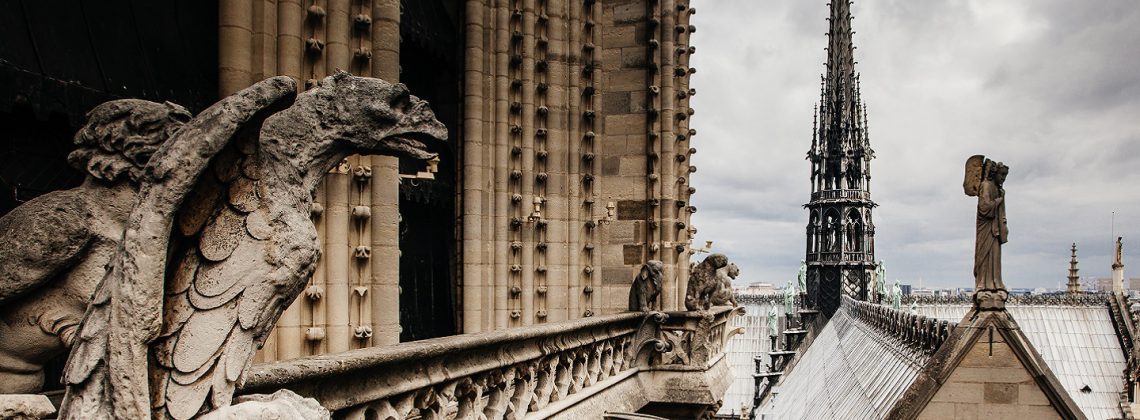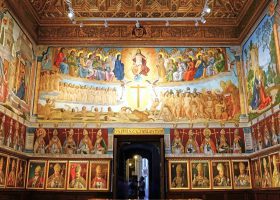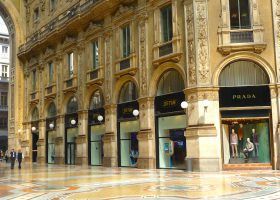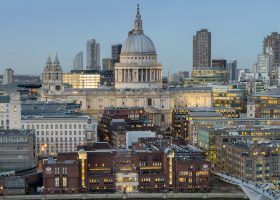Cathédrale Notre-Dame de Paris and the Eiffel Tower are, without a doubt, two of Paris’ most iconic landmarks. If your knowledge of Notre-Dame is only as deep as the animated movie, it’s time to level up. Dive into everything you need to know about the things to see both inside and outside of Notre-Dame.
Pro Tip: Planning what to do on your trip to Paris? Bookmark this post in your browser so you can easily find it when you’re in the city. Check out our guide to Paris for more planning resources, our top Paris tours for a memorable trip, and the best things to do in Paris.
What You Have to See at Notre-Dame de Paris
While the Eiffel Tower is the light of Paris, Notre-Dame Cathedral is the spiritual heart of Paris and has been for nearly 1,000 years. You can’t miss this towering cathedral since it dominates the cityscape in the heart of Paris. You’ll find it on the larger island, Île de la Cité, of the Seine River just a couple blocks from Saint-Chapelle. “Notre Dame” means “Our Lady”, which is fitting since Parisians dedicated it to the Virgin Mary.
Architectural historians regard this magnificent church as one of the finest examples of the early French Gothic style. When you see it in person, you’ll agree. The church is as breathtaking on the exterior—with its towers, soaring flying buttresses, and spire—as it is on the interior. In part, this beauty is thanks to its colorful stained glass windows and lofty vaulted ceilings.
There is some mystery around its origins, but it’s believed that workers began construction of Notre-Dame around 1163. Paris historian Andrew Ayers tells us that we don’t actually know the precise start date. That’s because records of its construction and even the name of its original architect have been lost!
You might be most familiar with the recent tragic fire that decimated much of this magnificent cathedral. Fortunately, heroic efforts saved many treasures, so I’ve included them below as some of the important things you should see here at Notre-Dame when you can visit again. I’ll start with a quick history of the fire (what was saved, what was lost) then take you on a journey of what to see at the cathedral when it reopens in December of 2024.
Not ready to book a tour? Find out if Paris tours are worth it.
The 2019 Fire at the Cathedral of Notre-Dame
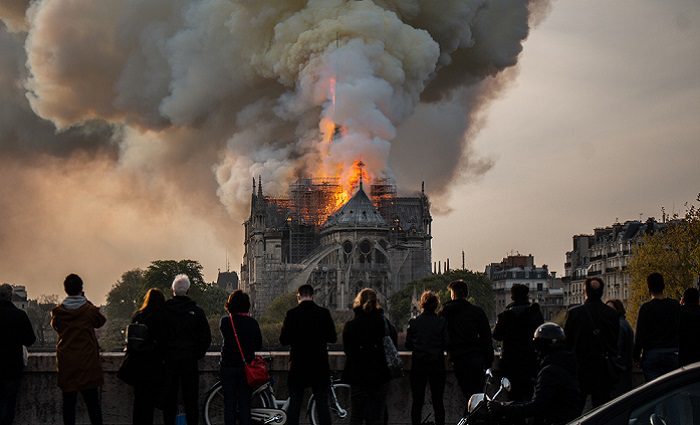
The world held its breath on Monday evening, April 15, 2019 as Paris’ treasured Notre-Dame burned out of control for nine hours. Hundreds of Parisians stood behind barriers watching, many of them in tears. Millions watched it live on television. Everyone feared the worst. Sadly, there were some inevitable, monumental losses.
For the faithful, it was an act of God that saved Notre-Dame, but it was also the result of countless acts of heroism. Specially trained crews formed a human chain to rescue what relics, decorations, and other items they could from the church while firefighters battled the blaze. When you finally get to step foot inside the awe-inspiring Cathedral of Notre-Dame, you will be a beneficiary of the many heroic acts that saved it.
What Was Saved in the Fire
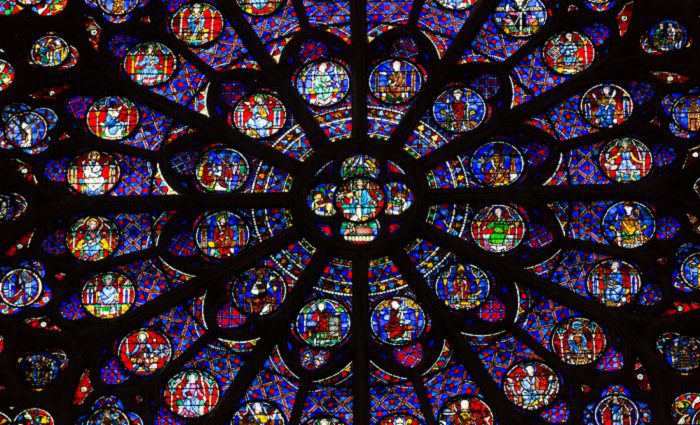
Notre-Dame de Paris has been the home of some of Christianity’s most sacred relics since the Middle Ages. Its holy relics are “relics of the Passion,” explains Notre-Dame expert Agnès Poirier. The Passion of Christ is another name for the suffering Jesus endured leading up to his death.
Notre-Dame’s relics include the Crown of Thorns, some wood from the cross Jesus died on, as well as a nail used in the crucifixion. King Louis IX, later known as Saint Louis, brought these objects to Paris in the 13th century. Additionally, a tunic worn by Saint Louis also became an important part of the relic collection.
Valiant crews managed to save all of these holy items from the fire! They also saved Le Grand Orgue (the Great Organ) and the breathtaking stained-glass rose windows. Notre-Dame’s south rose window, made by a team of gifted craftsmen in 1260, is a magnificent example of illustrious Christian art.
Jesus sits in majesty in the center of this window and seems to have been watching over the heroes who saved the church. But I’ll tell you more about the rose windows and other stained glass later on.
What Was Lost in the Fire
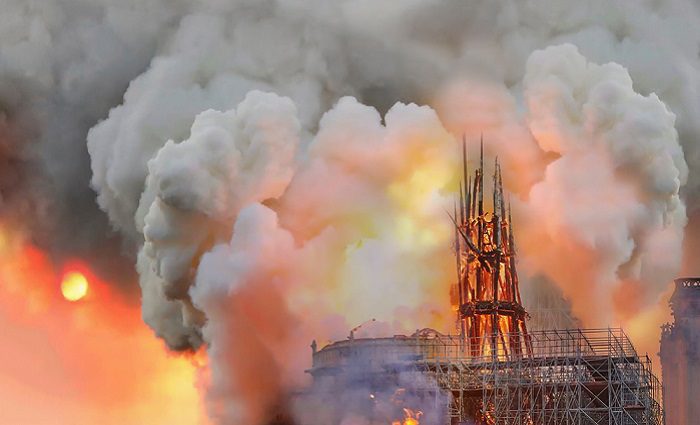
Can you guess what Parisians called the famous spire of Notre-Dame? They nicknamed it “la fléche,” which means arrow. The spire pointed directly toward heaven from the very heart of France. Could there be more profound symbolism?
So, you can imagine how devastated the people of Paris—and of all of France—felt when the 305-foot-tall spire made from 700 combined tons of wood and lead succumbed to the flames. Amazingly, the 16 copper statues of the four Gospel writers and the 12 apostles that surrounded the spire survived!
Sadly, according to the Friends of Notre-Dame, the 800-year-old wooden roof known as “the Forest” burned completely. As one of the oldest roofs of that type in Paris, it can’t be rebuilt. Instead, builders are replacing it with something newer and safer.
But now for the good news! The lovingly restored version of Cathédrale Notre-Dame de Paris will be more remarkable than ever. Here is a list of the top things to see on your visit after it reopens in December of 2024!
10. The Parvis of Notre-Dame de Paris (aka Place Notre-Dame)
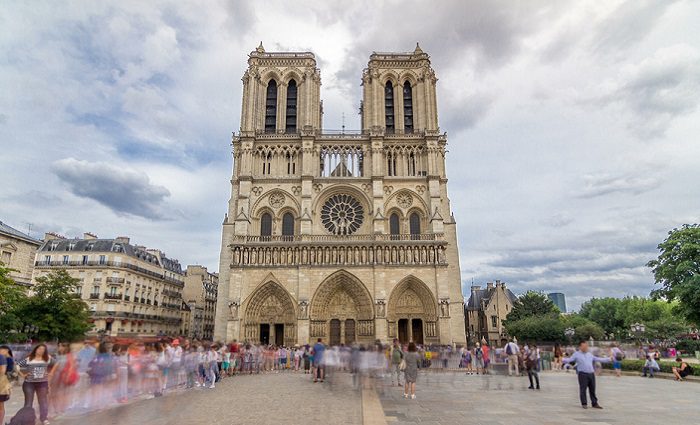
Great for Selfies | Parvis of Notre-Dame de Paris
Even during reconstruction, this is the happening place everyone comes to night or day. The parvis is the square in front of Notre-Dame and is the French word that describes the area in front of a church. Architects designed these squares to be transitional zones between the city and the sacred space of the church.
To the south of the parvis is the Seine River (to the right in the view above). To the west is the Rue de la Cité, which becomes the Petit Pont or “Little Bridge,” leading to the Latin Quarter on the Left Bank (South Bank).
When Notre-Dame was new, the parvis was barely a tenth of its current size since part of it held a foundling hospital. According to the medieval French newspaper called L’Express, the law forced convicted criminals to confess their crimes in public in the parvis.
Later, during the 1500s and 1600s, criminals were also executed there, including a man who murdered a priest inside of Notre-Dame! The parvis of Notre-Dame has been expanded over the years to show off the architecture of the great church. That’s why you’ll see so many people angling for that iconic selfie here.
Have you considered how much more you could learn about Notre Dame’s rich history and hidden gems with an expert guide by your side? Explore Notre Dame Island Guided Tour with Sainte-Chapelle Entry.
9. Point Zero Paris
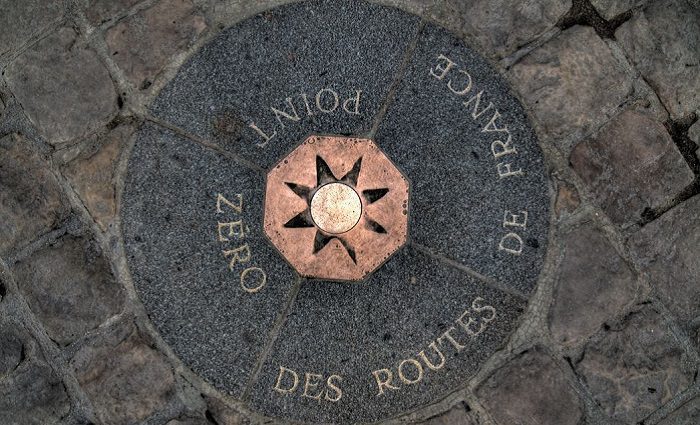
Fun Tradition | Parvis of Notre-Dame de Paris
Love to make wishes? Notre-Dame has you covered! Near the front of the parvis and close to the western façade’s main entrance is Paris Point Zero. This is the point from which all travel distance is measured in France! The French Ministry of Ecology which oversees transportation in the country boasts that the location of Point Zero is accurate within one centimeter!
This rather unassuming bronze plaque set in the stones in front of Notre-Dame is the center of all sorts of folklore mostly involving love and luck. Toss a coin onto the bronze star and make a wish. Kiss your lover as you both stand on the spot to ensure lasting love. Spin in a circle with one foot on the marker and make a wish. Or invent something new and let us know in the comments!
Our Best Paris Tours

Likely to Sell out
Privileged Access Eiffel Night Tour with Seine River Cruise
Sometimes the most amazing moments happen by chance. Other times, they are orchestrated by professionals. In this case, you’ll have an evening to remember as you cruise the Seine for an hour, sipping champagne and taking in the sites like Notre-Dame, the Louvre, and more. Afterwards, follow your guide past the long lines and take the elevator to the Eiffel Tower’s second floor for an unforgettable view.





(104)
See Prices
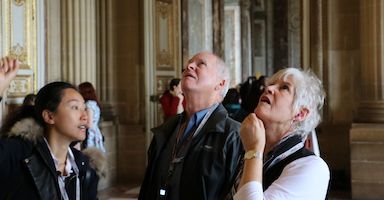
Likely to Sell Out
Skip the Line Palace of Versailles and Gardens Tour from Paris
Versailles isn’t that difficult to get to by train, but why deal with the stress on your own? Our guide will meet you in central Paris, purchase your train tickets, and ensure you get off at the right stop in Versailles. With skip-the-line tickets, you’ll bypass the crowds and get right into this incredible palace as your guide explains the most incredible (and controversial) history of France’s favorite palace.





(215)
See Prices
Not ready to book a tour? Find out if Paris tours are worth it.
8. The Archaeological Crypt of the Île de la Cité, Paris
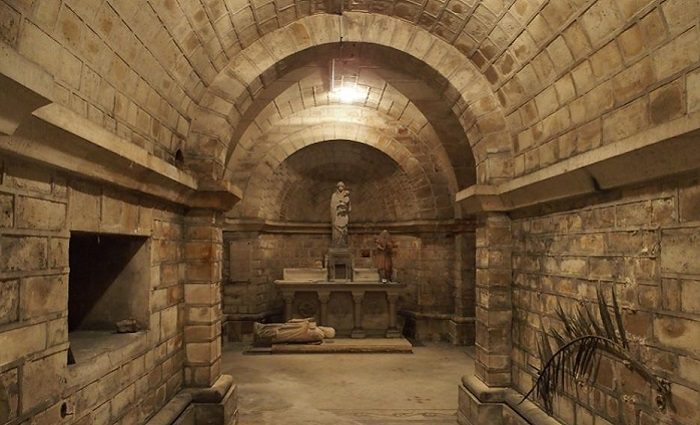
Ancient Discovery | Crypt and Roman Bath House | Northwest Corner of the Parvis
I’m going to let you in on a well-kept secret about the parvis of Notre-Dame de Paris: literally beneath your feet are historical treasures discovered only recently! The quiet archaeological site beneath the parvis is called the Archaeological Crypt of the Île de la Cité.
The city of Paris undertook some extensive renovations of the area to build a subterranean parking garage. In the process, workers made an astonishing discovery of layers of historical artifacts and structures no one knew had existed!
You can visit the crypt! There aren’t human remains (head to the catacombs for that experience), but you’ll learn about Paris’ earliest days as an ancient port called Lutetia. According to the Mairie du Paris (Mayors of Paris Association) which manages historic sites, the artifact here have been identified as a Gallo-Roman bath house, an old city wall from the 4th century AD, remains of an old foundling hospital, and even an outline of Paris’ 19th-century modernized sewer system.
Also hiding underground: original steps from the western side of Notre Dame that were covered by successive layers of paving stones. All-in-all, if you’re wondering what things you have to see at Notre-Dame Cathedral, this hidden crypt is a must that few know about!
7. The Equestrian Statue of Charlemagne and His Guards
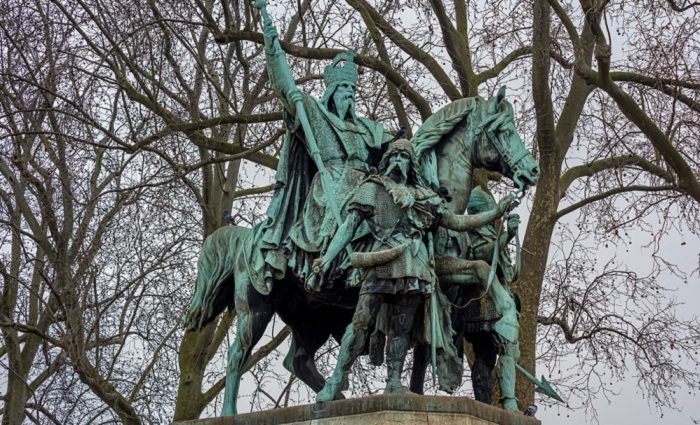
Louis and Charles Rochet | Bronze | 1878 | Southeast Corner of the Parvis
Charlemagne is the man. The Father of Europe. You can find the impressive sculpture of him on the southeast side of Place Notre-Dame. It’s unmissable. Most likely, you’ll see a pigeon or two perched on the head of this statue created by Louis and Charles Rochet.
Parisians and tourists alike love this sculpture though they often mistake it for a much older artwork than its 19th-century heritage. So why is Charlemagne so cool? His reformations improved the culture, literacy, and governing of many European nations. Eventually, he was crowned king of the Franks in 768 A.D. and became emperor of the Romans by 800 A.D.!
According to art historian Dominique Perchet, the sculpture you see at Notre-Dame captures a moment in his later years. He looks powerful and well-armed as he and his guards stand watch over Paris’ beloved cathedral. Ironically, Notre-Dame didn’t exist until 400 years after his reign. Better late than never, right?
6. Notre-Dame’s Gothic Features—Inside and Out
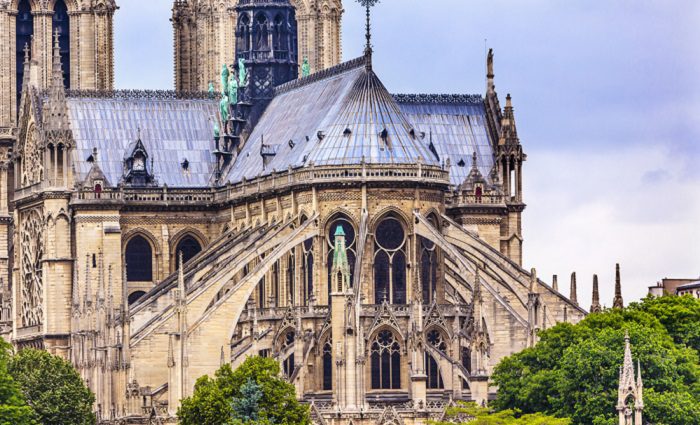
Unknown Architect | Around 1163-1345 | Southern End of the Cathedral
Where do you even begin to talk about such a complicated work of architecture you see above? Well, we can start with the basics like what makes the cathedral of Notre-Dame a Gothic-style structure. There are some basic features of the Gothic style you should know about so you can easily identify similar churches.
First, you will always see pointed arches rather than rounded ones. Second, Gothic churches have flying buttresses. What’s a flying buttress? According to architectural historian Paul Frankl, a flying buttress (which looks like a huge rib extending from the core of the building) supports the weight of the tons of stone in the walls.
Architects in the 12th century figured out that they could build immensely high walls and open them up with massive windows if you supported them from the side. A buttress transfers the weight of the walls outward and downward so they don’t collapse. Now what you see above makes more sense, right?
As for the third feature of Gothic-style churches—yes, you guessed it! Stained glass windows. The fourth key element of a Gothic church is the rib vaults. The huge, open spaces inside old cathedrals are topped by vaults. Each vault has a ceiling that look like an “X.” These stone support structures hold up the other stones that make up the ceilings. Notice how the vaults have pointed arches as well.
Lastly, every Gothic church is going to be elaborately decorated. After all, a Gothic church is meant to resemble heaven and to inspire awe in the worshippers who step inside.
Not ready to book a tour? Find out what the best Louvre tours are and why.
5. The Western Façade and Towers
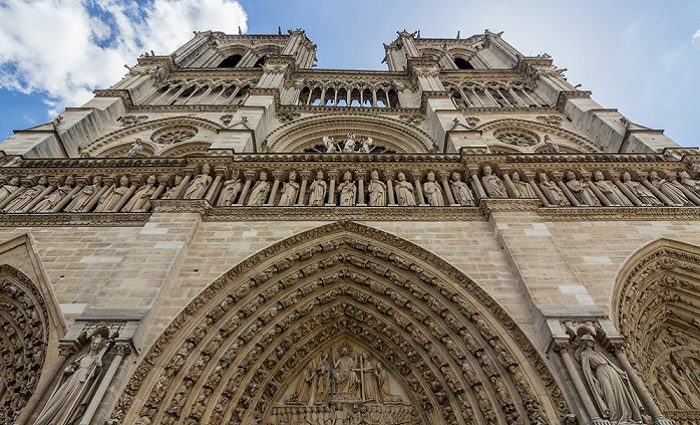
Unknown Architect | Around 1163-1345 | Intricate Carvings
Did you know that the position of ancient Christian churches is intentional? Designers usually located the entrance on the west side so they could place the altar on the east side. According to art historian Marilyn Stokstad, early Christians believed that Jesus would return from the east.
There’s also an important intention behind the position of light in a Gothic church that simulates that sacred arrival and presence of Christ. The west entrance of Notre-Dame de Paris includes a huge rose window, which lets in afternoon light across the entire nave or the central part of the church.
The two symmetrical towers are bell towers for 10 enormous bronze bells that will ring again on notable holidays. Notice that the middle, arched portal below the towers is larger with elaborate decorations. You’ll see a Last Judgment scene carved into the stone. It’s a reminder as you enter to worship to refrain from sin as you will ultimately be judged by Jesus, who sits in majesty on a heavenly throne.
The line of 28 sculptures above the arches are biblical kings known as the Gallery of Kings. During the French Revolution, rioters thought these statues represented kings of France, and they destroyed or mutilated them, cutting off many of the heads. After all, it was the age of the guillotine!
It wasn’t until 1977 that 21 of the heads were discovered during some construction work in the 9th arrondissement, according to the Cluny Museum of Medieval Art. The heads on the current statues at Notre-Dame are copies. The originals are kept safe from vandalism and weather in the Cluny Museum.
Look closely to see traces of the paint on the sculptures. Many of the decorative features of Notre-Dame were originally painted!
4. The Famous Gargoyles of Notre-Dame
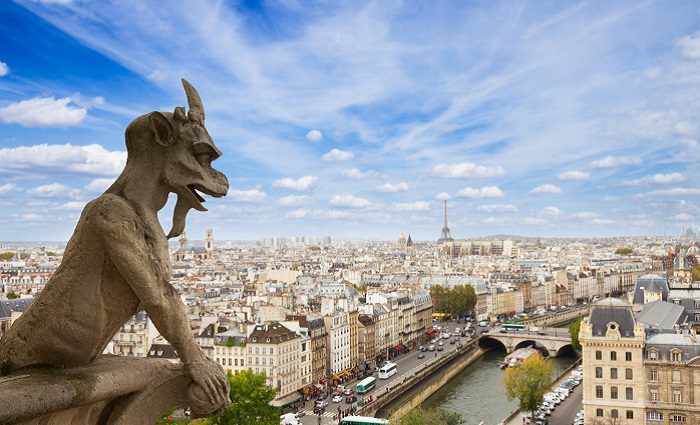
Unknown Sculptor | “Stryga,” Notre-Dame’s Most Famous Gargoyle | Functional but Cool
If you’re up for climbing 422 steps, you can buy a ticket to enter the north tower (when it’s open again). Should you brave those winding stairs, you will be rewarded richly with a view of Paris and Notre-Dame’s magnificent roof. You will also get a pigeon’s-eye view of some of the cathedrals most imposing decorative features: the gargoyles!
Strictly speaking, notes Kelly Richmond-Abdou, the fantastical beasts that lurk in the heights of Notre-Dame are grotesques. Most of them serve a structural function as waterspouts! Be careful standing beneath them in a rainstorm!
Others, like the elegant stork you can look for, are there simply to look amazing. And they just might ward off evil spirits, according to French legend. The collection of grotesques you’ll see if you climb the tower is called the “Gallery of Gargoyles.”
3. The Heavenly Nave of the Cathedral of Notre Dame
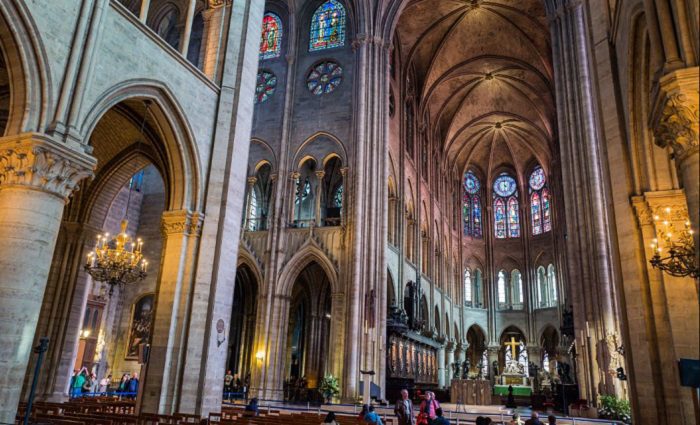
Massive Vaults | Nave, Chapels, and Altar | Around 1163-1345
No religious structure built in the 12th century is as large as Notre-Dame de Paris. None. Just look at the height of the ceiling and the perfectly precise architecture throughout!
The basic floor plan is that of a Latin cross, which is typical of church architecture. Stokstad explains that while the walls are high—147 feet, to be precise—the width of the building is unusually narrow. That narrow effect means the vaulting seems even higher. Notre-Dame’s interior could have felt more confining if not for the huge stained glass windows, which make it seem like the walls disappear leaving behind ethereal, colored light!
As you walk through Notre-Dame, you’ll see a series of side chapels—all decorated individually. On either side of the altar, stop to look at the impressively carved wooden panels with scenes from the life of Christ. You can actually pass behind the altar and loop around to the north side of the church, which I recommend doing.
One of the major concerns when the fire broke out was for the safety of 13 irreplaceable paintings honoring Virgin Mary, saints, and apostles. These paintings, known as “Les Mays de Notre-Dame,” are all masterpieces by important artists, like Charles Le Brun, the court painter for Louis XIV.
These artworks were displayed throughout the cathedral. By yet another miracle, all of the paintings survived the fire! When you see them in person, take an extra moment to admire them as you say a silent prayer of gratitude for their preservation.
Not ready to book a tour? Check out our Paris Guide for more resources.
2. The Treasury of Notre-Dame de Paris
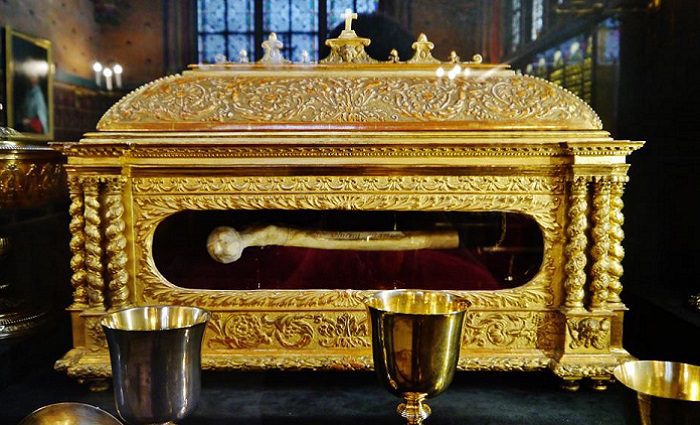
Treasury and Relics | South Side of the Nave (Interior)
Visitors to Notre-Dame de Paris often skip the treasury. In my opinion, that’s a big mistake. Don’t miss this fascinating place to see inside Notre-Dame, especially since it’s free!
You’ll find the treasury on the right side of the nave. You’ll see all sorts of religious objects such as dazzling gold chalices and jewel-encrusted gold reliquaries. (A reliquary is a special container for storing sacred relics like you see above.)
A relic can be almost any object closely associated with a holy person. For example, it could be a snip of fabric from the veil of the Virgin Mary. Or it might be a bone from a saint’s body. Notre-Dame’s treasury protects the most revered Passion relics (the Crown of Thorns, a piece of Jesus’ cross, and a nail from the crucifixion) and the garment of Saint Louis.
Agnès Poirier tells us that during the French Revolution, rioters badly damaged Notre-Dame cathedral. Consequently, many objects from the Treasury disappeared. Starting in 1801, the cathedral began reassembling its treasury collection and restoring it to its full glory under the watchful eye of architect Viollet-le-Duc. It definitely lives up to its name.
1. The Stained Glass Windows of Notre-Dame Cathedral
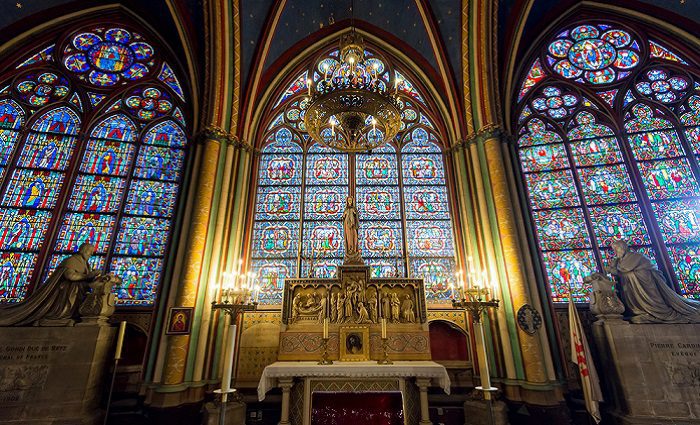
Stained Glass Windows in the Altar | Around 1163-1345 | Northeast Corner
It’s hard to choose just one thing that’s the most important to see here at Notre-Dame Cathedral, but I’ve decided the stained glass windows deserve our top spot. They truly are the “gems” from which colored rays of light bedazzle this church, as 11th-century French cleric Abbot Suger called them, reveals art historian David S. Herrstrom.
Suger oversaw the construction of the Basilica of Saint-Denis just north of Paris. The basilica (now a cathedral) was the first Christian church to feature several elements of the Gothic style.
The queens of France were crowned at Saint-Denis while the kings were crowned at Notre-Dame. Suger believed the refracted light through the stained glass was divine. Once you step into Notre-Dame, you’ll see what he meant and agree.
Most of the stained glass windows in Notre-Dame date to the 13th century as masterpieces of medieval craftsmanship. While they are all extraordinarily beautiful, none are more splendid than the three rose windows.
The rose window on the western side of Notre-Dame (1225) depicts the Virgin Mary. She is surrounded by scenes from the Old Testament. The south transept rose window built in 1260 features Jesus in the center, surrounded by martyrs, apostles, and holy virgins. The Friends of Notre-Dame tells us that there are 84 panels of stained glass in this window alone!
The north rose window is where you’ll see a traditional image of Virgin Mary holding her baby, the Christ Child. His royal birth is noted by the circle of biblical kings and prophets around them. What’s most important about this window is that it’s the only one with much of the original 13th-century glass still in use! Amazing!
Other windows in the church tell different stories that you should look for as you wander from the entrance to the altar above. Take your time gazing at these windows and immersing yourself in divine light!
Not ready to book a tour? Find out if Paris tours are worth it.

Where To Stay in Paris
With a city as magnificent as Paris, it can be hard to find the perfect hotel at the perfect price. Explore the best hotels and places to stay in these incredible neighborhoods in Paris.
